Summary | Excerpt | Reviews | Beyond the book | Read-Alikes | Genres & Themes | Author Bio
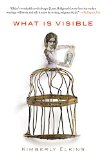
Critics' Opinion:
Readers' Opinion:
First Published:
Jun 2014, 320 pages
Paperback:
Jun 2015, 320 pages
 Book Reviewed by:
Book Reviewed by:
Rebecca Foster
Buy This Book
A vividly original literary novel based on the astounding true-life story of Laura Bridgman, the first deaf and blind person who learned language and blazed a trail for Helen Keller.
At age two, Laura Bridgman lost four of her five senses to scarlet fever. At age seven, she was taken to Perkins Institute in Boston to determine if a child so terribly afflicted could be taught. At age twelve, Charles Dickens declared her his prime interest for visiting America. And by age twenty, she was considered the nineteenth century's second most famous woman, having mastered language and charmed the world with her brilliance. Not since The Diving Bell and the Butterfly has a book proven so profoundly moving in illuminating the challenges of living in a completely unique inner world.
With Laura - by turns mischievous, temperamental, and witty - as the book's primary narrator, the fascinating kaleidoscope of characters includes the founder of Perkins Institute, Samuel Gridley Howe, with whom she was in love; his wife, the glamorous Julia Ward Howe, a renowned writer, abolitionist, and suffragist; Laura's beloved teacher, who married a missionary and died insane from syphilis; an Irish orphan with whom Laura had a tumultuous affair; Annie Sullivan; and even the young Helen Keller.
Deeply enthralling and rich with lyricism, What Is Visible chronicles the breathtaking experiment that Laura Bridgman embodied and its links to the great social, philosophical, theological, and educational changes rocking Victorian America. Given Laura's worldwide fame in the nineteenth century, it is astonishing that she has been virtually erased from history. What Is Visible will set the record straight.
Prologue
Laura, 1888
How little they trot me out for show these days, and yet here I am this frigid morning, brought down from my room to meet a child, and me not out of my sickbed two weeks. They're actually calling her "the second Laura Bridgman." The second, and I'm still here! What am I supposed to do, bow down to her? Set her on my knee? I didn't like children even when I was one, and now I think them worse than dogs. I've shriveled and so they've searched for another freak in bloom to exhibit and experiment on. It's taken Perkins decades to find one pretty enough, quick enough. Well, pretty is really the important thing, or at least not too strange or looking like what she is. Not looking like what I am.
"Just talk to her," Annie Sullivan writes upon my hand. "You have so much in common." Like two in the throes of the plague might share tips and grievances? Yes, little Miss Keller and I will rattle on about our lives in our respective cells,...
What is visible here? Not only the myriad developments of a half century in American history and the whole span of a remarkable existence, but also a glimpse into how love and purpose can make any life worthwhile...continued
Full Review
(985 words)
This review is available to non-members for a limited time. For full access,
become a member today.
(Reviewed by Rebecca Foster).
 Bob Shacochis, author of The Woman Who Lost Her Soul
I found myself slowly mesmerized by What Is Visible, and then increasingly haunted and bound to the story of Laura Bridgman . . . To say that I was profoundly moved by this novel would be an understatement.
Bob Shacochis, author of The Woman Who Lost Her Soul
I found myself slowly mesmerized by What Is Visible, and then increasingly haunted and bound to the story of Laura Bridgman . . . To say that I was profoundly moved by this novel would be an understatement. Ha Jin, National Book Award Winner for Waiting
What Is Visible is remarkable at many levels. It is written in an intelligent, intricate style, populated with many true historical figures, and teeming with convincing period details. Above all, the novel has a unique narrative structure, which illustrates the art of fiction at its best in presenting the interior. A splendid debut indeed.
Ha Jin, National Book Award Winner for Waiting
What Is Visible is remarkable at many levels. It is written in an intelligent, intricate style, populated with many true historical figures, and teeming with convincing period details. Above all, the novel has a unique narrative structure, which illustrates the art of fiction at its best in presenting the interior. A splendid debut indeed. J. Courtney Sullivan, New York Times bestselling author of Maine and The Engagements
An astonishing debut that vividly brings to life a forgotten chapter of American history. You'll recognize many of the characters in What Is Visible, but its heroine, Laura Bridgman, is likely someone you've never heard of. After you read it, you'll never forget her. Beautiful, heart-wrenching, and at times quite funny, this book is a marvel.
J. Courtney Sullivan, New York Times bestselling author of Maine and The Engagements
An astonishing debut that vividly brings to life a forgotten chapter of American history. You'll recognize many of the characters in What Is Visible, but its heroine, Laura Bridgman, is likely someone you've never heard of. After you read it, you'll never forget her. Beautiful, heart-wrenching, and at times quite funny, this book is a marvel. Robert Olen Butler, Pulitzer Prize-winning author of A Good Scent from a Strange Mountain
What Is Visible is not only a compelling, deeply moving novel, it is a fully realized work of art. This is an auspicious debut of an important new writer.
Robert Olen Butler, Pulitzer Prize-winning author of A Good Scent from a Strange Mountain
What Is Visible is not only a compelling, deeply moving novel, it is a fully realized work of art. This is an auspicious debut of an important new writer.Deafblindness is either congenital (present from birth) or acquired later in life. It can be attributed to many causes including rubella, glaucoma, cataracts, diabetic retinopathy, and premature birth. Deafblindness is not one monolithic condition; it varies in severity or completeness: some people maintain limited use of one or both senses. Both Laura Bridgman (the subject of Kimberly Elkins's What Is Visible) and Helen Keller could see and hear until the age of two, when severe illness struck.
There are many ways of communicating with the deafblind. For those with residual hearing, clear speaking or hearing aids can make a difference. For those with limited sight, lipreading, large print writing, or sign language performed in their ...
This "beyond the book" feature is available to non-members for a limited time. Join today for full access.

If you liked What Is Visible, try these:

by Clare Beams
Published 2021
Sarah Waters meets Red Clocks in this searing novel, set at an all-girl school in 19th century Massachusetts, which probes the timeless question: who gets to control a woman's body and why.
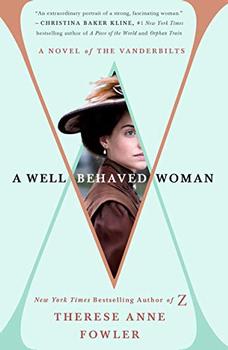
by Therese Anne Fowler
Published 2019
The riveting novel of iron-willed Alva Vanderbilt and her illustrious family as they rule Gilded-Age New York, from the New York Times bestselling author of Z: A Novel of Zelda Fitzgerald.
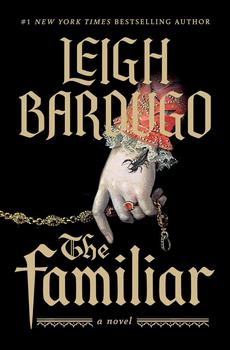

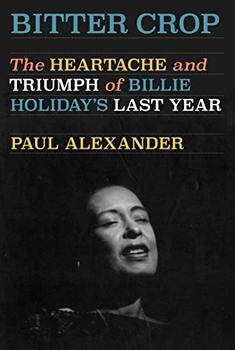
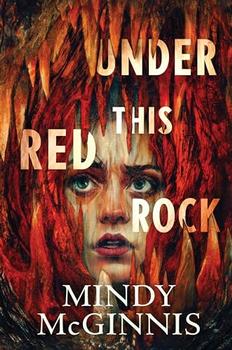

The Flower Sisters
by Michelle Collins Anderson
From the new Fannie Flagg of the Ozarks, a richly-woven story of family, forgiveness, and reinvention.

The House on Biscayne Bay
by Chanel Cleeton
As death stalks a gothic mansion in Miami, the lives of two women intertwine as the past and present collide.

The Funeral Cryer by Wenyan Lu
Debut novelist Wenyan Lu brings us this witty yet profound story about one woman's midlife reawakening in contemporary rural China.
Your guide toexceptional books
BookBrowse seeks out and recommends the best in contemporary fiction and nonfiction—books that not only engage and entertain but also deepen our understanding of ourselves and the world around us.